Do you have a question about the Subaru Impreza 2.2L MT and is the answer not in the manual?
Introductory message from the manufacturer about the owner's manual.
Guidance on navigating chapters and tables of contents for information retrieval.
Explanation of WARNING, CAUTION, and NOTE symbols and their meanings.
Essential safety advice covering seat belts, airbags, child safety, and driver behavior.
Details on master, submaster, valet keys, and key number identification.
Instructions for manual and power door locking/unlocking from inside and outside.
How to use keyless entry, program transmitters, and understand the security system.
Procedures for opening and closing trunk lids, rear gates, and fuel filler doors.
Information on installing and using roof racks and carrying attachments.
How to adjust front seats, head restraints, and access rear seats.
Proper use of 3-point and 2-point seat belts, safety tips, and maintenance advice.
Guidelines for securing child restraint systems in rear seats, especially with SRS airbags.
How the SRS airbag system works, its components, and safety precautions during deployment.
Identification and function of instrument panel components and gauges.
Explanation of all dashboard warning lights, their meanings, and actions to take.
How to operate headlights, turn signals, fog lights, wipers, and washers.
Instructions for using the ventilation, heating, and air conditioning system for comfort.
How to operate the AM/FM radio, tune stations, and use cassette player functions.
How to set the clock and adjust display modes for the audio system.
Location and use of sun visors, storage compartments, cup holders, and trays.
How to use accessory power sockets and the cigarette lighter for charging or accessories.
Operation of interior lights, coat hooks, spotlights, compass, barometer, and altimeter.
How to use the luggage cover and cargo anchorage eyelets for securing items.
Initial driving procedures, engine break-in, and proper fuel selection guidance.
Understanding ignition switch positions and procedures for starting the engine manually or automatically.
Tips for fuel economy, maximum speeds, driving in different conditions, and automatic transmission use.
How to adjust steering, use cruise control, and properly park the vehicle.
Information on brake system use, ABS, and tire pressure, wear, and rotation.
Guidance for driving AWD vehicles, off-road conditions, and winter driving techniques.
How to load the vehicle safely, understand weight ratings, and tow trailers.
Procedures for hazard lights, engine overheating, and jump-starting a dead battery.
Step-by-step guide on how to change a flat tire safely, including tool usage.
Information on proper towing methods, including flat-bed trucks and tow eyelets.
Guidelines for washing, waxing, polishing, and protecting the vehicle's exterior finish.
How to clean seat fabric and synthetic leather upholstery using recommended methods.
Safety guidelines before servicing and an overview of engine compartment components.
Procedures for checking/changing engine oil, coolant, and air cleaner element.
How to check and maintain transmission, power steering, and differential gear oils.
Procedures for checking brake fluid, clutch fluid, battery, and windshield washer fluid levels.
How to replace wiper blades and locate/replace blown fuses in both fuse boxes.
Guidance on tire inspection, rotation, pressure checks, and wheel cover replacement.
Instructions for replacing headlights, fog lights, parking lights, and other exterior bulbs.
Key dimensions, weight ratings, and load limits for the vehicle.
Details on engine type, electrical system, and capacities for various fluids.
Information on tire sizes, pressure, wheel sizes, and wheel alignment parameters.
Diagrams of fuse panels and a comprehensive chart of exterior and interior light bulbs.
Location of chassis number, emission labels, and VIN plates for vehicle identification.
How to interpret tire grades for treadwear, traction, and temperature resistance.
Procedure for reporting potential safety defects to the National Highway Traffic Safety Administration.
Introductory message from the manufacturer about the owner's manual.
Guidance on navigating chapters and tables of contents for information retrieval.
Explanation of WARNING, CAUTION, and NOTE symbols and their meanings.
Essential safety advice covering seat belts, airbags, child safety, and driver behavior.
Details on master, submaster, valet keys, and key number identification.
Instructions for manual and power door locking/unlocking from inside and outside.
How to use keyless entry, program transmitters, and understand the security system.
Procedures for opening and closing trunk lids, rear gates, and fuel filler doors.
Information on installing and using roof racks and carrying attachments.
How to adjust front seats, head restraints, and access rear seats.
Proper use of 3-point and 2-point seat belts, safety tips, and maintenance advice.
Guidelines for securing child restraint systems in rear seats, especially with SRS airbags.
How the SRS airbag system works, its components, and safety precautions during deployment.
Identification and function of instrument panel components and gauges.
Explanation of all dashboard warning lights, their meanings, and actions to take.
How to operate headlights, turn signals, fog lights, wipers, and washers.
Instructions for using the ventilation, heating, and air conditioning system for comfort.
How to operate the AM/FM radio, tune stations, and use cassette player functions.
How to set the clock and adjust display modes for the audio system.
Location and use of sun visors, storage compartments, cup holders, and trays.
How to use accessory power sockets and the cigarette lighter for charging or accessories.
Operation of interior lights, coat hooks, spotlights, compass, barometer, and altimeter.
How to use the luggage cover and cargo anchorage eyelets for securing items.
Initial driving procedures, engine break-in, and proper fuel selection guidance.
Understanding ignition switch positions and procedures for starting the engine manually or automatically.
Tips for fuel economy, maximum speeds, driving in different conditions, and automatic transmission use.
How to adjust steering, use cruise control, and properly park the vehicle.
Information on brake system use, ABS, and tire pressure, wear, and rotation.
Guidance for driving AWD vehicles, off-road conditions, and winter driving techniques.
How to load the vehicle safely, understand weight ratings, and tow trailers.
Procedures for hazard lights, engine overheating, and jump-starting a dead battery.
Step-by-step guide on how to change a flat tire safely, including tool usage.
Information on proper towing methods, including flat-bed trucks and tow eyelets.
Guidelines for washing, waxing, polishing, and protecting the vehicle's exterior finish.
How to clean seat fabric and synthetic leather upholstery using recommended methods.
Safety guidelines before servicing and an overview of engine compartment components.
Procedures for checking/changing engine oil, coolant, and air cleaner element.
How to check and maintain transmission, power steering, and differential gear oils.
Procedures for checking brake fluid, clutch fluid, battery, and windshield washer fluid levels.
How to replace wiper blades and locate/replace blown fuses in both fuse boxes.
Guidance on tire inspection, rotation, pressure checks, and wheel cover replacement.
Instructions for replacing headlights, fog lights, parking lights, and other exterior bulbs.
Key dimensions, weight ratings, and load limits for the vehicle.
Details on engine type, electrical system, and capacities for various fluids.
Information on tire sizes, pressure, wheel sizes, and wheel alignment parameters.
Diagrams of fuse panels and a comprehensive chart of exterior and interior light bulbs.
Location of chassis number, emission labels, and VIN plates for vehicle identification.
How to interpret tire grades for treadwear, traction, and temperature resistance.
Procedure for reporting potential safety defects to the National Highway Traffic Safety Administration.
| Brand | Subaru |
|---|---|
| Model | Impreza 2.2L MT |
| Category | Automobile |
| Language | English |
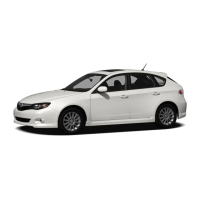


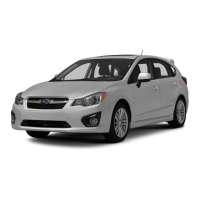
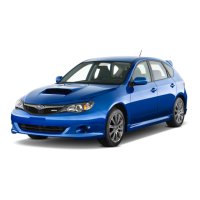
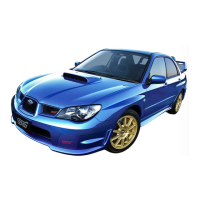
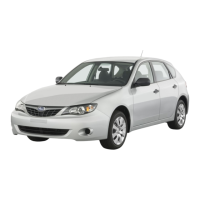

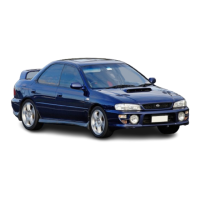

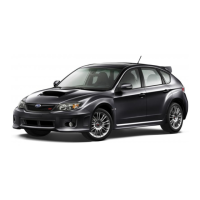

